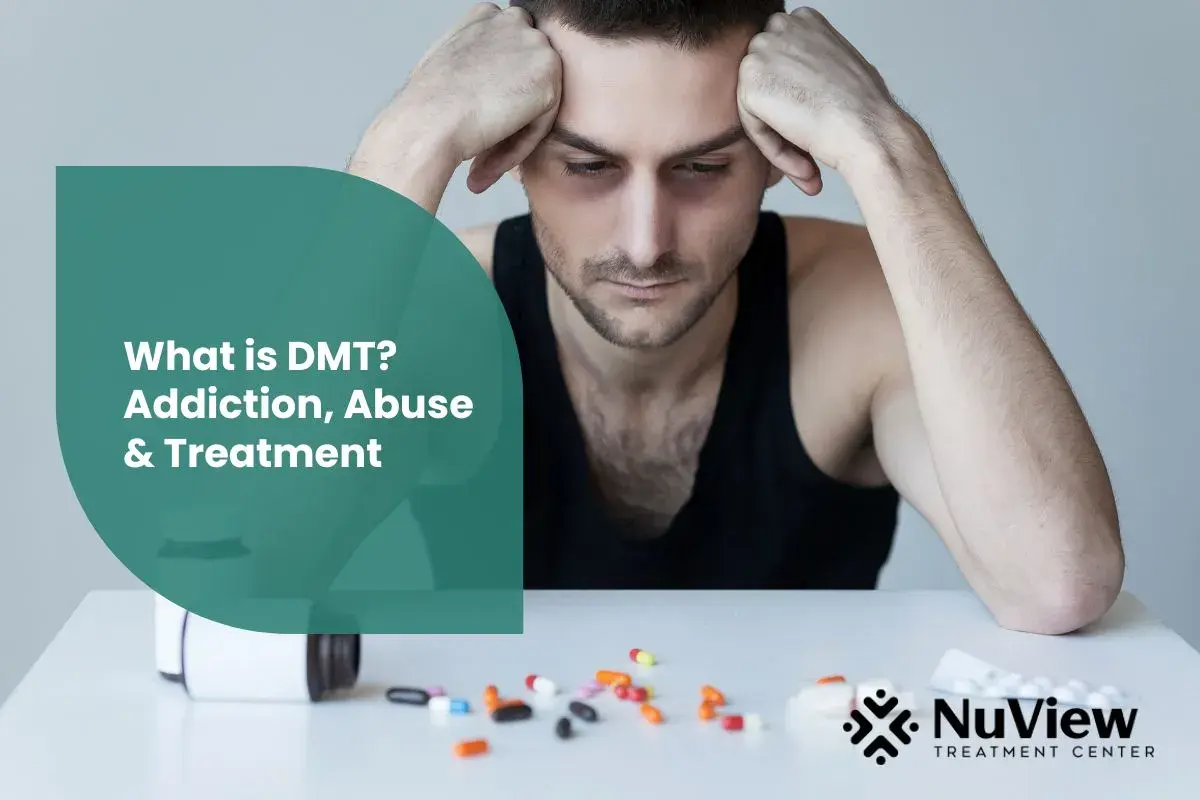With the rise in substance abuse in the United States have come a series of obstacles to overcome by addicts. The flood of new prescription drugs on the market with potential for abuse and the availability of socially acceptable substances such as alcohol and now in many states Marijuana, it’s becoming harder and harder to avoid the abuse of a wide variety of addictive substances.
Many of the abused substances on this list are pharmaceuticals, illustrating the importance of using caution when taking substances with potential for abuse, even if you have a prescription for them. Many of the pharmaceutical drugs on this list were intended for short term acute use, however, end up being used over long periods of time and at a higher dosage than intended. Misuse of these substances increases the likelihood of dependency and abuse. If you have a high risk for addiction, either by family history or past experience, it’s important to use the substances only when needed, and under closer supervision of a licensed professional.
The following is a list of some of the most commonly abused substances in 2021. While many of the substances are often taken by those who don’t end up abusing them, it’s important to note that they do have the potential for abuse, as is seen in the statistics related to abuse.
For the sake of complete accuracy, we used the Substance Abuse and Mental Health Data Archive. The percentage of prevalence is amongst people ages 12 and older who used these substances recreationally in recent years. This list DOES NOT factor in people who use some of these substances for medical purposes.
Get Started With Nuview Treatment Center
Our dedicated professional staff is here to guide you or your loved one on the journey to lasting recovery, offering support every step of the way.
List Of Top 25 Most Commonly Abused Substances in The US
#25 – Ketamine – 0.17% prevalence
Ketamine is a powerful anesthetic often used to tranquilize horses. It’s found a recreational culture due to its ability to produce hallucinations.
Since the “high” only lasts for a short period of time, many users have to take more in order to gain the initial effects. Furthermore, if too much ketamine is taken (usually, through injection) then a user may be transported into a “K-hole”.
About 3 million Americans (1.1%) ages 12 and older have tried ketamine at some point in their lifetime. Most try it for the first time when they’re 19 [4]. Luckily, even for heavy users, an overdose is unlikely. However, ketamine is a very addictive substance.
#24 – Oxymorphone – 0.18% prevalence
Oxymorphone is a potent opioid analgesic which may be prescribed to people facing chronic pain. In recent years, abuse rates have gone up consistently alongside the opioid epidemic.
This can be seen in statistics surrounding popular brands, such as Opana. In 2007, 268,000 prescriptions were written for the substance. By 2012, that number jumped to 1.2 million. In 2010 alone, more than 4,500 emergency room visits were a result of Opana abuse.
It’s important to note, it is possible to overdose from oxymorphone.
#23 – DMT – 0.2% prevalence
N, N-Dimethyltryptamine (DMT) is a hallucinogenic drug often overlooked as its chemical structure naturally occurs both in plants and animals. Though it’s not as widely used as other psychedelics, the visual and auditory hallucinations are much more intense.
For the most part, DMT can’t cause too many physical problems in the user. However, the mental risks are strong. Since DMT releases a large amount of serotonin in the body, it can lead to:
- Agitation
- Confusion
- Headaches
- Loss of muscle coordination
As mentioned, not too many people use DMT. However, each year, researchers find more and more users giving it a try. Most take the substance between the ages of 18 and 25.
#22 – Carisoprodol (Soma) – 0.21% prevalence
Carisoprodol is a muscle relaxant and often used alongside physical therapy. It’s known for alleviating pain and discomforts from strains, sprains, and other muscle injuries.
Since prescription rates of the substance are on the rise, so are addiction rates. People who abuse carisoprodol are at risk of overdose.
#21 – Methadone – 0.23% prevalence
Methadone is often used to treat people suffering from heroin or narcotic pain medication addiction. In essence, it’s a weakened opioid to help make withdraw easier.
However, methadone still holds all the traits of an opioid high people are addicted to. In turn, rates of abuse have gone up in recent years. Between 1990 and 2013, annual methadone overdose deaths increased from 790 to 5,420.
#20 – Lorazepam (Ativan) – 0.33% prevalence
Lorazepam is often used to treat anxiety and is in in the class of medications known as benzodiazepines. It causes the brain to slow down and creates a feeling of calmness in its users.
Between 1998 and 2008, the number of hospital incidents related to the drug increased by 300%. In 2010, there were nearly 35,000 ER visits due to Lorazepam.
#19 – Morphine – 0.37% prevalence
Morphine has been prescribed in patients with severe pain for over a century now. With that, it’s one of the most commonly abused opioids in all of modern history.
Between 2004 and 2008, the number of morphine-related emergency room visits increased by 106%. More than 60% of morphine abusers receive the drug from either friends or family.
#18 – Buprenorphine (Suboxone) – 0.38% prevalence
Buprenorphine is another medication used to help ease withdrawal symptoms during opioid detox. With that, it offers users a reduced level of typical opioid effects.
Between 2006 to 2011, emergency room visits caused by buprenorphine abuse went up five times, to 21,483 total. This is quite a bit considering only 3% of U.S. physicians (about 35,000 out of 800,000) are allowed to prescribe the substance.
#17 – Heroin – 0.39% prevalence
You may be surprised to find heroin so high up on this list. However, the epidemic America currently faces is an opioid one. And heroin is a small part of a bigger picture.
In 2017 alone, nearly 15,482 people died from a heroin overdose. In comparison, 1,960 faced overdose deaths in 1999.
#16 – Zolpidem (Ambien) – 0.45% prevalence
Zolpidem was initially designed to help people with insomnia get some sleep at night. It’s known as a sedative-hypnotic and causes activity in the brain to slow down.
Between 2005 and 2010, the amount of Zolpidem-related emergency room visits increased by 220%. It’s estimated that more than 500,000 Americans use Ambien either recreationally or medically.
#15 – Diazepam (Valium) – 0.54% prevalence
Diazepam is a prescription drug often used as a medication for anxiety, muscle spasms, and seizures. Sometimes, it’s also used to alleviate distress brought upon by alcohol withdrawal.
Between 2003 and 2012, the amount of treatment facility admissions for Valium (in those ages 12 and up) increased from 1,023 to 7,272. It’s estimated that around 13 million Americans misued diazepam in 2012. However, the study showed that number slightly declined (to 12.5 million) the following year.
#14 – Clonazepam (Klonopin) – 0.6% prevalence
Clonazepam is a medication which has been used to treat seizures and panic attacks. Sometimes it’s used alone or in combination with other medications. When intaken, it causes irregular electrical activity within the brain.
It falls under the class of drugs known as benzodiazepines.
In 2008, around 60,000 people were admitted into a treatment facility due to various benzodiazepines. In 2011, there were 75,000 emergency room visits caused by clonazepam alone.
The danger in benzodiazepines is they’re very accessible. In fact, nearly 15% of Americans have some form of benzodiazepine in their household.
#13 – Methylphenidate (Ritalin) – 0.61% prevalence
Methylphenidates are prescribed for the sake of treating symptoms of attention-deficit/hyperactivity disorder (ADHD). It’s causes increased brain activity through natural substances in the brain.
Currently, many college students abuse the drug as a means of productivity. It’s claimed around campuses that Ritalin allows students to get a lot done in a short period of time. This is particularly alluring during times of high-stress for students, such as finals week.
Nearly 16% of college students have tried methylphenidate at some point for recreational purposes. Since 5.9 million children have been diagnosed with ADHD, this makes Ritalin widely available.
#12 – Methamphetamine – 0.68% prevalence
Methamphetamine is a stimulant which often comes in a crystal form. Its chemical structure is similar to other amphetamines (such as Adderall) but is often mixed with other chemicals as well. The drug gives the brain a large influx of dopamine [22].
In 2012, about 1.2 million people (0.4% of the population) had used methamphetamine in the past year. With 440,000 using it in the past month. This was a significant drop from 2006 when 731,000 (0.3% of the population) reported using in the past month.
#11 – Tramadol – 0.77% prevalence
Tramadol is a medication used in treating moderate pain (sometimes moderately severe pain). It is an opiate similar to morphine, but with less of a “high” for users.
It should, nearly 84% of those who abuse tramadol have seizures within 24 hours.
In 2013, about 1.5 million Americans abused some form of a painkiller. About 60% of these people received it from a friend or relative who was prescribed the medication.
#10 – LSD (Acid) – 1.07% prevalence
Lysergic acid diethylamide (or, LSD for short) is a hallucinogen which affects the central nervous system in a way to alter mood, behavior, and the user’s perception of reality. LSD also releases a large amount of serotonin – a chemical we naturally produce which is responsible for control behavior, mood, the senses, and thinking.
Since there are no physical dangers to LSD (for example, you can’t overdose), many young people are more likely to try it. This can be seen in Europe, where 4.2% of those ages 15 to 24 have tried the drug at least once. It’s estimated that 3.1 million Americans, ages 12 to 25, have given it a try.
#9 – MDMA (Ecstasy/Molly) – 1.5% prevalence
Popularly known as a “club drug”, 3,4-methylenedioxymethamphetamine (or, MDMA for short) is a synthetic drug that changes the user’s mood and perception. It combines two classes of drugs – stimulants and hallucinogens. In effect, people who take MDMA feel increased energy along with distorted sensory and time perception [26].
For the most part, MDMA has had steady statistics within the last few decades and has even declined slightly in recent years. About 7% of those ages 12 and older have tried ecstasy at least once in their lifetime. About 1% have used it in the last year.
#8 – Alprazolam (Xanax) – 2.05% prevalence
Alprazolam is the most common medication used to treat anxiety and panic disorder. It’s under the class of medications benzodiazepine and is used to decrease irregular excitement in the brain.
Both recreational and medical use of Xanax is rising at an alarming rate. In 2013, nearly 50 million prescriptions were written for alprazolam while, in 2006, only 38 million were written. That’s more than a 9% increase.
Misuse has also risen – in 2005, there were a recorded 57,419 alprazolam-related emergency room visits while, in 2010, that number more than doubled to 124,902.
#7 – Oxycodone (OxyContin) – 2.05% prevalence
Oxycodone is one of the most popular opioid medications both for recreational and medical use. It’s prescribed to alleviate severe pain and causes chemical changes in the brain and nervous system.
It’s estimated that more than 13 million Americans ages 12 and up currently abuse the drug. In 2010 alone, there were about 5,500 first time users. Painkiller misuse altogether has resulted in over 100,000 hospital visits.
#6 – Cocaine – 2.19% prevalence
Cocaine is an extremely addictive stimulant derived from the coca plant. It comes in the form of a fine, white, crystal powder and is often mixed with other things, such as cornstarch, talcum powder, and flour. Certain mixtures result in the drug becoming what’s known on the street as “crack cocaine”.
Cocaine use has declined slightly since 2000 and has remained steady since 2009. About 1.5 million Americans have used it within the past month (0.6% of the whole population). Overdose rates have fluctuated throughout the years, with a peak of close to 7,500 deaths in 2006.
#5 – Amphetamine (Adderall) – 2.8% prevalence
Like methylphenidate, amphetamine is a stimulant often prescribed for attention-deficit/hyperactivity disorder (ADHD). Its purpose is to help people with the disorder focus better and control their hyperactivity. However, it’s one of the most commonly abused substances – especially by college students.
In fact, it’s estimated that a person’s likelihood for abusing amphetamines doubles if they attend a university.
#4 – Hydrocodone (Vicodin) – 3.17% prevalence
Hydrocodone is the most popularly used opiate and is commonly prescribed for severe pain. Like other opioids, it affects the brain and nervous system’s response to pain.
In 2012, about 2 million Americans used opioids recreationally for the first time. Of that 2 million, 20% had received a prescription for medical reasons. The other 80% received the drug from a friend or relative. In 2013, 46% of drug-related medical emergencies were caused by various opioid medications.
#3 – Marijuana – 17.68% prevalence
With the drug becoming legal across the nation, it comes as no surprise marijuana is so high on this list. The plant contains a chemical known as tetrahydrocannabinol which acts on the brain’s function for mood and consciousness.
Since marijuana remains illegal on a federal level, it’s currently the most commonly abused illegal substance. According to a 2015 study, over 22.2 million people using it in the past month. Though use is on an upward trend, many researchers are concerned about adolescent use.
In 2016, 9.4% of eighth graders reported using marijuana in the last year. Amongst 10th graders, that number increased to 23.9%. Since cannabis has effects on brain development, people under the age of 21 are at risk when using.
#2 – Tobacco – 33.1% prevalence
Tobacco contains nicotine, a stimulant which can be just as addicting as heroin, cocaine, and amphetamines. Since it’s a legal substance, young people are more willing to give it a try – despite the numerous warnings of the negative health effects attached to smoking. With the advent of electronic cigarettes (also known as e-cigs), a safer alternative to smoking – much of the youth is finding themselves hooked to nicotine.
In the United States, tobacco is the leading cause of preventable death with 480,000 Americans dying from it each year. Around 75% of all cigarette smokers do so on a daily basis.
#1 – Alcohol – 61.24% prevalence
Alcohol is currently the most commonly abused substance – both due to its legality and social acceptance. Drinking from time-to-time is okay and may even have health benefits. But just like all substances on this list, people who drink alcohol are at risk of forming an addiction and this addiction can have deadly consequences.
Every year, about 88,000 people die from alcohol-related causes, including alcohol-impaired driving which took 9,967 lives in 2014. It’s estimated that 86.4% of adults have tried alcohol at some point in their life with 56% drinking within the last month.
Get Started With Nuview Treatment Center
Reference Sources
[1] SAMHDA: National Survey on Drug Use and Health (NSDUH)
[2] National Drug Intelligence Center: Ketamine Fast Facts
[3] NCBI: Facing Addiction in America: Ketamine
[4] Drug Enforcement Administration: Oxymorphone
[5] MedlinePlus: Oxymorphone
[6] PubChem: N,N-Dimethyltryptamine
[7] NCBI: Dimethyltryptamine (DMT): prevalence, user characteristics…
[8] MedlinePlus: Carisoprodol
[9] SAMHSA: Methadone
[10] MedlinePlus: Lorazepam
[11] Get Smart ABout Drugs: Morphine
[12] Drug Enforcement Administration: Buprenorphine
[13] NIH: Overdose Death Rates
[14] MedlinePlus: Zolpidem
[15] MedlinePlus: Diazepam
[16] The Mental Health Clinician: Benzodiazepine use, misuse, and abuse: A review
[17] MedlinePlus: Clonazepam
[18] MedlinePlus: Methylphenidate
[19] National Center on Safe Supportive Learning Environments: Recreational Use of Ritalin on College Campuses
[20] NIH: Methamphetamine
[21] NIH: What is the scope of methamphetamine abuse in the United States
[22] MedlinePlus: Tramadol
[23] Psychopharmacology: Lysergic acid diethylamide: a drug of ‘use’?
[24] NIH: MDMA (Ecstasy/Molly)
[25] MedlinePlus: Alprazolam
[26] MedlinePlus: Oxycodone
[27] NIH: Cocaine
[28] NIH: What is the scope of cocaine use in the United States?
[29] CESAR: Amphetamines
[30] MedlinePlus: Hydrocodone
[31] MedlinePlus: Marijuana
[32] CDC: Cannabis Facts and Stats
[33] NIH: What are marijuana’s long-term effects on the brain?
[34] NIH: Tobacco/Nicotine and E-Cigs
[35] CDC: Current Cigarette Smoking Among U.S. Adults Aged 18 Years and Older
[36] MedlinePlus: Alcohol
[37] NIH: Alcohol Facts and Statistics
- List Of Top 25 Most Commonly Abused Substances in The US
- Reference Sources
- List Of Top 25 Most Commonly Abused Substances in The US
- Reference Sources
Get Help Today!
Everyone is Welcome Here and We All Have Your Back
Your healing journey deserves a personalized approach. At NuView, we integrate expertise in behavioral therapy, mental health, and substance use treatment to create a customized recovery plan tailored to your unique needs.
Connect with our Admissions Specialists today.







Written By
Dr. Ryan Peterson